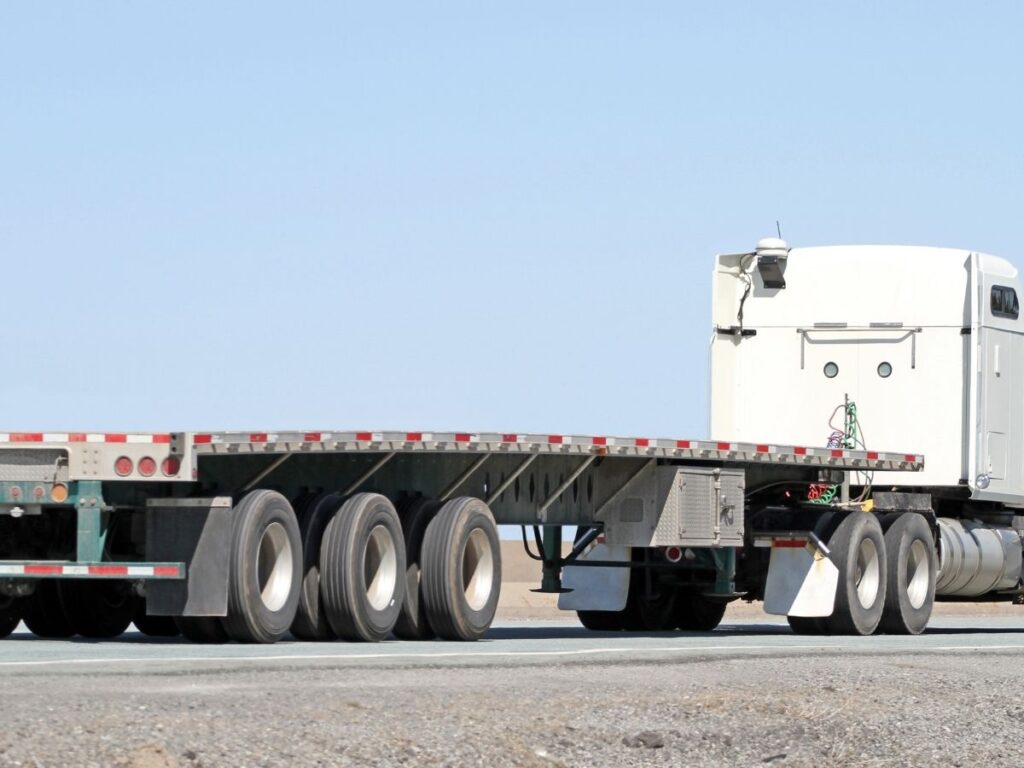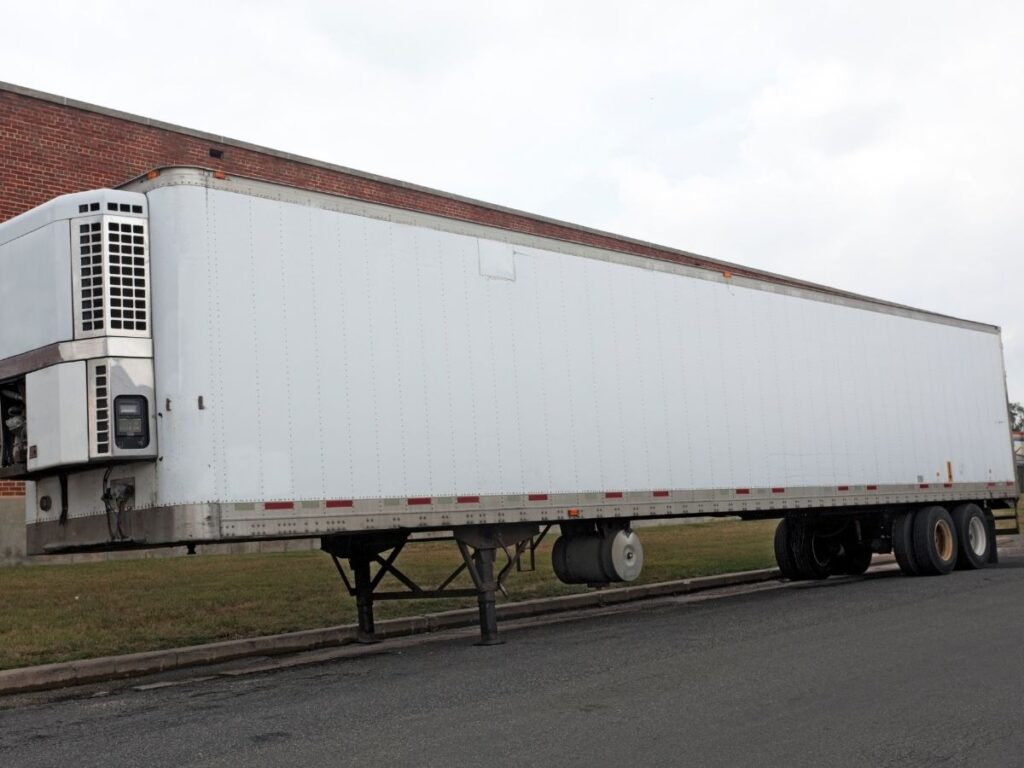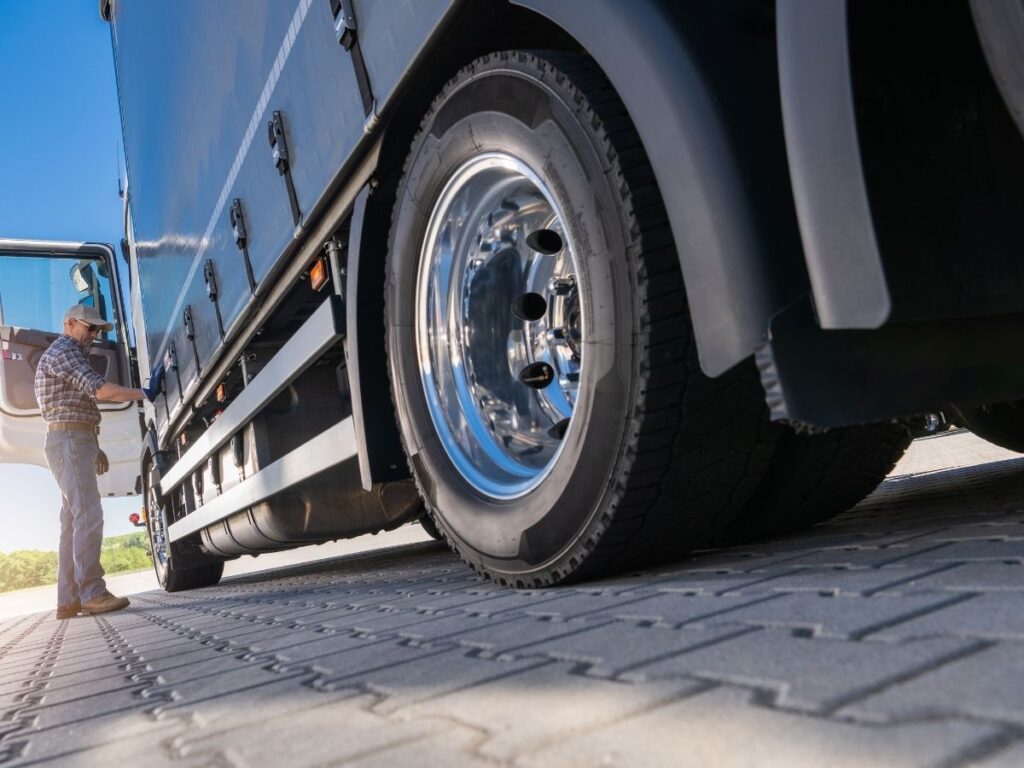If you’ve ever stood in front of two trailers and wondered, “Which one do I really need?”—I’ve been there.
I’ve made that guess. Sometimes I got it right. Sometimes, I didn’t. But over the years, I’ve worked with teams in construction, mining, logistics, and agriculture. And I’ve learned exactly how to match the trailer to the task.
This guide is here to help you do the same.
Inside, you’ll find:
- A simple breakdown of semi trailers vs full trailers
- Design differences
- Use cases by industry
You’ll leave knowing which trailer fits your load, your jobsite, and your goals. No guessing. Just clear, honest info.
So let’s dive in!
1. Quick Comparison Table
Before we dive deeper into each section, here’s a quick side-by-side comparison to give you a snapshot of how semi trailers and full trailers differ.
| Feature | Semi Trailer | Full Trailer |
| Axles | Rear axle(s) only | Both front and rear axles |
| Front Support | Requires a tractor to support the front | Can stand on its own |
| Connection Type | Fifth-wheel coupling | Drawbar connection |
| Maneuverability | Better for tight turns and backing | Harder to reverse; needs more space |
| Load Distribution | Shared between trailer and tractor | Evenly distributed across both axles |
| Typical Use | Long-haul, highway, cross-border | On-site, farm use, short hauls |
| Fuel Efficiency | Generally more efficient due to lower drag | Less efficient; more rolling resistance |
| Maintenance Cost | Lower (fewer tires and parts) | Higher (more tires, brakes, and drawbar components) |
| Tractor Swapping | Easy to swap between trucks | Usually assigned to one vehicle |
| Best For | Logistics, construction, retail, agriculture (long trips) | Mining sites, farm work, slow and stable local transport |
2. What Is a Semi Trailer?
A semi trailer is a type of trailer that doesn’t have a front axle.
That means the front part can’t stand on its own. Instead, it connects to a tractor (or truck head), which supports the front and helps pull the load.
Here’s what sets it apart:
- No front wheels
- Relies on the truck to hold it up
- Usually it has two or more axles at the back
- Built for long-distance hauling and heavy loads
Because of this setup, semi trailers are a popular choice for:
- Construction equipment
- Bulk materials
- Packaged goods
- Containers
- Temperature-sensitive cargo (with refrigerated versions)
They’re a go-to for jobs that involve long trips, mixed cargo, or heavy transport needs.
How It Works
A semi trailer connects to a truck using a fifth-wheel coupling. That’s a round metal plate mounted on the back of the truck. The front of the trailer slides into it and locks in place.
This setup gives the trailer a wide range of motion. That’s why semi trailers are easier to turn. Especially in:
- Narrow city streets
- Job sites with limited space
- Loading docks with tight access
Compared to full trailers, semis can handle sharp turns and back into spots more smoothly.
In my own work, I’ve seen how that flexibility saves time. You’re not stuck making five-point turns. You’re able to move in, unload, and get back on the road.
At Rhinotrail, we’re committed to building high-quality semi trailers that fit the real needs of real businesses. Whether it’s a skeletal, flatbed, dump, fence, warehouse, or low-bed trailer, we offer custom-built options to match different jobs, regions, and regulations. With the right tools and the right specs, you don’t have to settle—you get what works.
So, if you’re hauling cargo across long distances—or dealing with tight delivery points—a semi trailer is often the better choice.
And now that you know how it works, it’s easier to see why it’s so common in industries like construction, mining, logistics, and agriculture.

3. What Is a Full Trailer?
A full trailer is built with both front and rear axles.
That’s a key difference from a semi trailer. It means the trailer can stand on its own, without needing a truck to hold up the front.
You might hear people call it a “drawbar trailer.” That’s because it connects to the pulling vehicle using a rigid bar instead of a fifth wheel.
Here’s what makes it different:
- Has wheels at both ends
- No part of its weight sits on the towing vehicle
- Can stand alone, even when disconnected
- Often used for bulk transport or site work
Because of that design, full trailers are common in:
- Agriculture (moving grain, hay, or livestock)
- Mining (on-site hauling of ore or stone)
- Some short-distance or closed-area jobs
They work well where stability matters more than maneuverability.
How It Works
A full trailer is pulled by a vehicle—usually a truck—using a drawbar.
The drawbar is a long, solid connection that doesn’t swivel like a fifth wheel. That makes the trailer follow the pulling vehicle more rigidly.
It sounds simple. But here’s where it gets tricky.
Since the trailer doesn’t pivot at the same point as a semi, it’s much harder to reverse. It doesn’t respond the same way. You often need more space and a lot more patience.
However, full trailers hold their balance well when parked. No landing gear. No tipping. That can be useful on farms or job sites where the trailer gets left while the truck goes elsewhere.
In my experience, full trailers are great in the right setting but frustrating in the wrong one. So knowing when and where to use them really matters.
If your job needs on-site stability and you don’t need to back into tight spots often, a full trailer might make sense.

4. Which One Fits Your Industry Best?
Choosing between a semi trailer and a full trailer isn’t just about specs. It’s about the work you do every day. The roads you drive. The cargo you carry. And what your jobsite looks like at 6 a.m. on a tight schedule.
I’ve worked with companies across construction, mining, agriculture, and logistics. And I’ve learned that the best trailer choice often depends on your industry, not just the trailer.
Let’s break it down.
Construction and Heavy Equipment Transport
In construction, semi trailers are the go-to.
Why? Because they’re easier to load and unload. And when you’re moving excavators, concrete panels, or steel frames, that speed matters.
- Flatbeds and low-beds offer better weight balance
- Semis handle turns better on busy job sites
- Less time lining up and repositioning
If you’re hauling big machines through tight areas, you’ll feel the difference right away.
Mining Operations
Mining sites usually need both trailer types. I’ve seen setups where each type plays a role.
- Full trailers handle on-site loads—think dump trailers moving rock from pit to plant
- Semi trailers take the long trip—hauling processed material or equipment off-site
It’s about pairing the right trailer with the right task.
Logistics and Transportation
Here, it’s mostly semi trailers—and for good reason.
- Easy to detach and switch tractors
- Works well with intermodal systems
- Built for long hauls, border crossings, and mixed cargo
If your work involves ports, highways, or warehouses, a semi trailer just fits better.
Manufacturers and Industrial Suppliers
Factories need trailers that keep up with production schedules. That’s why they lean on semi trailers.
- Great for moving raw materials in
- Reliable for sending finished goods out
- Quick to connect, disconnect, and move on
If time is money in your business, semi trailers help you save both.
Agriculture and Food Industries
This one depends on what you’re hauling.
- Full trailers are often used on farms—moving grain, hay, or animals between barns and fields
- Semi trailers are better for cold storage units or regional food deliveries
I’ve seen farms with both. One for local tasks. One for hitting the road.
Oil, Gas & Energy
Most operations use semi trailers here.
- Tanker trailers move fuel, chemicals, and compressed gases
- Low-beds carry wind turbine parts or drilling equipment
Full trailers sometimes show up on isolated sites where gear stays in place for weeks.
Retail & E-commerce Distribution
Fast-moving goods need flexible trailers. So it’s no surprise that semi trailers are preferred.
- Easier to dock and unload
- Work well with most warehouse setups
- Can be swapped out fast between trips
For e-commerce, every minute counts. Semi trailers help you move quicker.
Independent Drivers
Here, it really depends on what you haul and where you go.
- Semi trailers are easier to back up, easier to manage alone
- Full trailers need more room to move and more skill to reverse
If you’re running solo, semis make life easier. I’ve seen many new drivers start there.
Every job is different. But when you understand how each trailer fits into your work, the choice becomes clear.
5. Maneuverability and Road Handling
The first time I tried backing up a full trailer, I nearly gave up. It didn’t move how I expected. Every turn felt off. Every correction made it worse. I’d been driving semi trailers for years—but this was different. And it reminded me how much trailer type affects how a rig handles on the road.
If you’re comparing semi trailers vs full trailers, knowing how they drive is just as important as knowing what they carry.
Which Is Easier to Drive?
If you’re new to trailers—or just want a smoother experience—semi trailers are easier to handle in most situations.
Here’s why:
- They pivot at the tractor
- They turn tighter
- They respond better in tight spaces
That makes them ideal for:
- Sharp turns
- Busy traffic
- Crowded job sites
- Warehouse docking bays
With a semi, you can go back into a tight spot without fighting the trailer. The fifth-wheel connection gives it more flexibility. That’s something you notice quickly when you’re pulling up to a narrow dock or trying to swing through a construction zone.
Full trailers, on the other hand, are a different story.
- They don’t pivot the same way
- They follow a straighter path
- They’re harder to reverse
Backing up a full trailer takes more space and more time. You don’t have the same control at the connection point. So if you’re working in cities or loading docks, it can be a real challenge.
I’ve seen experienced drivers struggle with full trailers in urban areas. It’s not that they’re unmanageable—but they take more practice, more room, and more patience.
Which Handles Terrain Better?
When it comes to road conditions, both trailers have their place. It depends on the terrain and the trip.
Semi trailers are more adaptable:
- Handle well on highways
- Manage both city and rural roads
- Better suited for mixed routes with turns, stops, and varied speeds
They’re flexible enough for most industries. From logistics to construction, semis can go where you need them to.
Full trailers are better on simple, open routes:
- More stable on straight roads
- Great for field work or farm-to-barn hauls
- Less likely to tip when left parked
On farms, I’ve seen full trailers loaded with hay or grain, sitting steady without a truck in sight. That stability can be a plus—especially in slower, closed environments.
Understanding how each trailer handles is key. It’s not just about specs. It’s about the feel of the road—and how your trailer responds when every second counts.
6. Load Capacity and Distribution
If you’ve ever loaded a trailer and watched it sag on one side, you know this: how you carry weight matters just as much as how much you carry.
I’ve seen hauls go wrong because the load wasn’t balanced. Tires wore out faster. Brakes struggled. And in rough terrain? Things got dangerous. That’s why understanding capacity and weight distribution is so important—especially if you’re hauling heavy or uneven cargo.
Which Carries More?
It’s easy to assume one trailer always holds more. But the truth is, it depends.
- Trailer design
- Local regulations
- Type of axles and suspension
- What you’re actually hauling
That said, full trailers often carry more per foot of trailer. Why? Because they support their own weight with both front and rear axles. The truck doesn’t carry any of the load.
But that doesn’t mean full trailers are always better.
- The load may shift more during turns
- Stability can drop when moving fast
- Full trailers aren’t always allowed on highways, depending on the region
So even if they carry more, they come with tradeoffs.
How Weight Is Distributed
Here’s where the two trailer types really differ.
Semi trailers rely on the truck’s rear axles to carry part of the load. That means:
- Weight is shared between trailer and tractor
- Turning and braking are affected by how the load is placed
- Balance is key to avoiding jackknifing or tipping
Full trailers carry weight more evenly. With axles at both ends, they sit balanced on their own.
This can be helpful in industries like:
- Mining, where you haul rock or ore over short distances
- Agriculture, where loads are often heavy but slow-moving
But again, placement still matters. An uneven load even in a full trailer can lead to tire wear, trailer sway, or worse.
From what I’ve seen, no trailer wins every time. But if you understand where the weight goes—and how your trailer handles it—you’ll avoid problems before they start.
7. Licensing and Road Regulations
One of the things I wish I had looked into earlier was licensing and trailer rules.
I remember a driver getting stopped at a checkpoint. Everything looked fine—load was secure, paperwork was ready. But the trailer was a full trailer, and the area had specific rules about axle spacing and total length. That stop turned into a delay. Then a fine. Then a lost job.
That’s when it hit me: knowing the difference between trailer types isn’t enough—you’ve got to know the rules too.
Do I Need a Special License?
If you’re driving a semi trailer, in most countries, you’ll need a CDL (Commercial Driver’s License) or something similar.
Why? Because you’re handling:
- A large vehicle
- A connection system (fifth-wheel coupling)
- A trailer that relies on the truck to stay upright
That means more responsibility and more training.
Now for full trailers, the rules can get tricky.
You might not need a different license, but there are often added restrictions based on:
- Total weight
- Length of the drawbar and trailer body
- Axle spacing
Some regions require permits for longer setups or place limits on where full trailers can go. It all depends on where you operate.
Country or Regional Road Rules
This is where things can get confusing fast.
Some places restrict full trailers from highways or urban areas. Others limit them by length or total gross weight. And if you’re hauling across borders—like from China into Southeast Asia or across EU countries—those rules can change mid-route.
What I’ve learned over time:
- Always check local transport laws
- Confirm trailer types allowed on specific routes
- Be clear on maximum length, width, and axle count
If you’re running logistics across countries, this stuff matters.
I’ve seen shipments get delayed or rerouted because a full trailer didn’t meet highway rules in the next region. That means lost time, extra fuel, and frustrated clients.
Bottom line: Know your license. Know your route. Know your trailer.
That knowledge keeps your wheels turning and your business on track.

8. Maintenance and Long-Term Cost
When I bought my first trailer, I only looked at the price tag. It seemed like a good deal. But I didn’t think about the long-term cost—maintenance, fuel, wear and tear.
A few months in, I started noticing the difference. More time in the shop. More tires to replace. More money going out than I expected. That’s when I started paying attention to the real cost of owning a trailer.
Which Is Cheaper to Maintain?
Semi trailers are usually cheaper to maintain over time.
Why?
- They have fewer axles
- That means fewer tires, brakes, and suspension parts
- Less weight on their own means less wear on everything
If you’re hauling long distances or want a trailer that’s easier to service, semis are often the smarter option.
At Rhinotrail, we build each semi trailer with durability in mind—especially for long-haul routes across different road types and regions.
Full trailers cost more to maintain. Here’s what adds up:
- More axles = more tires, more brakes
- Longer drawbars can wear out or need repairs
- Parts can be harder to find in some regions
And the more parts you have, the more things can go wrong. I’ve worked with fleets that kept full trailers for site work—but stuck with semis for anything long haul.
Fuel Efficiency
Fuel is a big part of any budget. And over time, semi trailers burn less fuel.
Why they’re better:
- Lighter when empty
- Less rolling resistance
- More aerodynamic when paired with the right truck
If you’re running long-distance or cross-country routes, this matters. You’ll feel it in your fuel bills after just a few months.
Full trailers, on the other hand, have:
- More rolling resistance
- More drag
- Higher fuel use, especially on uneven or soft roads
They work fine for short, slow trips—like hauling between farm fields or moving stone at a mining site. But on the highway? They’ll cost you more at the pump.
From what I’ve seen, semi trailers are easier and cheaper to own in the long run.
If you’re trying to cut costs, reduce downtime, and save on fuel, they’re usually the better bet.
But no matter which you choose, the key is knowing the full picture, not just the price on day one.

9. Flexibility and Operational Efficiency
In this line of work, every minute counts. Whether you’re loading goods at a warehouse or swapping tractors on the road, small delays can turn into big problems.
I’ve seen drivers wait hours because the right truck wasn’t available. I’ve also seen operations run smooth because the trailer setup made it easy to adapt. That’s where flexibility becomes a big deal.
Can I Swap Tractors Easily?
If you’re working with a semi trailer, the answer is yes.
This is one of the biggest advantages of semis. You can:
- Swap tractors quickly
- Mix and match with different trucks
- Keep your trailer moving, even if a truck breaks down
That kind of flexibility is great for:
- Logistics fleets
- Long-distance hauls
- Companies with multiple drivers and routes
I’ve worked with teams that rotate trucks daily. With semi trailers, they didn’t have to slow down. One tractor pulls in, hooks up, and goes. Easy.
Full trailers don’t offer that.
- They’re usually tied to one specific truck
- The drawbar setup limits how fast you can change tractors
- If that one truck has an issue, the trailer sits still
This might be fine for farm work or site jobs—but for anything time-sensitive, it can cause delays.
Loading/Unloading Time
Time at the dock matters. Especially in retail, food delivery, or fast-moving freight.
Semi trailers are faster to load and unload. Here’s why:
- Easier to get back into tight docks
- Standard height for loading equipment
- Less setup time
I’ve watched warehouse crews clear a semi in under 30 minutes. That’s hard to match with a full trailer.
Full trailers often take longer.
- More steps during setup
- May need to be positioned more carefully
- Not always dock-friendly
For slower operations—like farms or remote sites—this isn’t a big issue. But if you’re running back-to-back trips, those extra minutes add up.
If you need to keep things moving—fast and often—semi trailers give you more freedom.
They work better with fleets, help you move quicker at the dock, and keep your operation running, even when something goes wrong.
10. Which One Should You Choose?
I’ve stood in the yard looking at two trailers—one full, one semi—and felt stuck.
Both had pros. Both had cons. But only one was right for the job I had to do that day. I’ve learned that picking the right trailer isn’t about what’s better overall—it’s about what’s better for you.
Let’s help you figure that out.
Use This Checklist to Decide
Start with the basics. Ask yourself:
- What are you hauling? Heavy machinery, livestock, food, or bulk materials?
- How far are you going? Local work or long-distance runs?
- What terrain and roads are involved? Tight city streets, wide highways, or off-road conditions?
- Do you need to swap tractors or trailers often? One truck or a rotating fleet?
- Are there legal restrictions in your area? Highway limits, length rules, or weight caps?
Match the Trailer to Work
Every job has its own flow. The trailer you choose should match it—not fight it.
- If you’re in construction, you need something easy to back in and out of tight spots.
- If you’re running long hauls, fuel use and reliability come first.
- If you’re hauling from farm to field, stability might matter more than speed.
It’s about finding the trailer that fits your pace, your cargo, and your roads.
Your answers will point you in the right direction. It’s not always about what’s cheaper or bigger. It’s about what works for your daily routine.
From my experience, choosing the right trailer saves time, fuel, and frustration. It’s not just about moving cargo—it’s about moving smarter.
Pick what fits your work. That’s how you stay ahead.
Conclusion
We’ve covered it all—design, road handling, cost, and use cases.
I’ve stood at the yard, staring at two trailers, trying to figure it out.
Now you won’t have to.
We’ve walked through how they work, how they handle, and who they work best for.
You’re ready to decide—with clarity and confidence.
So what are you waiting for?
Check your haul. Check your route. Make the call that keeps you on track.
Still unsure? I’m here to help.
Contact us today.


